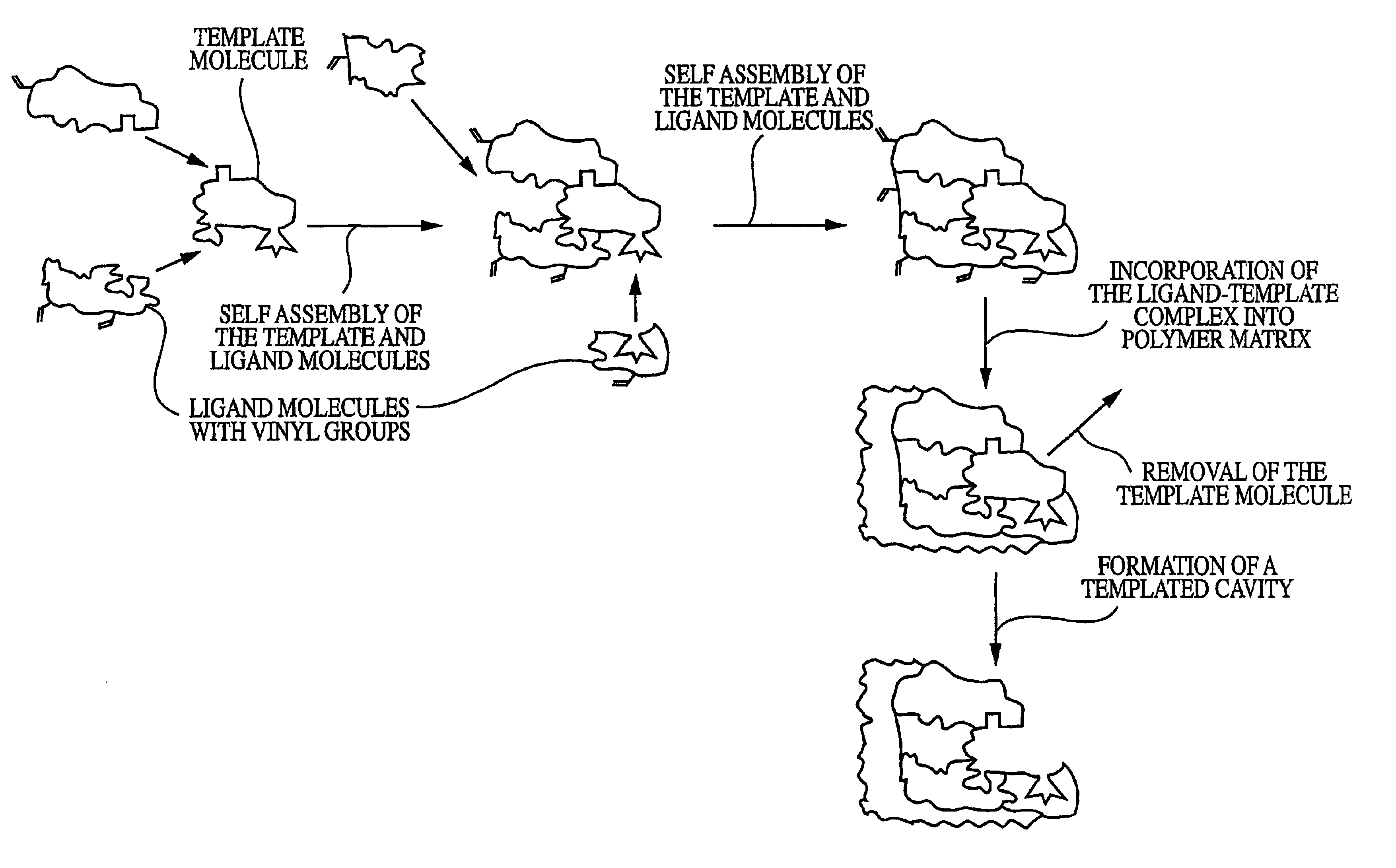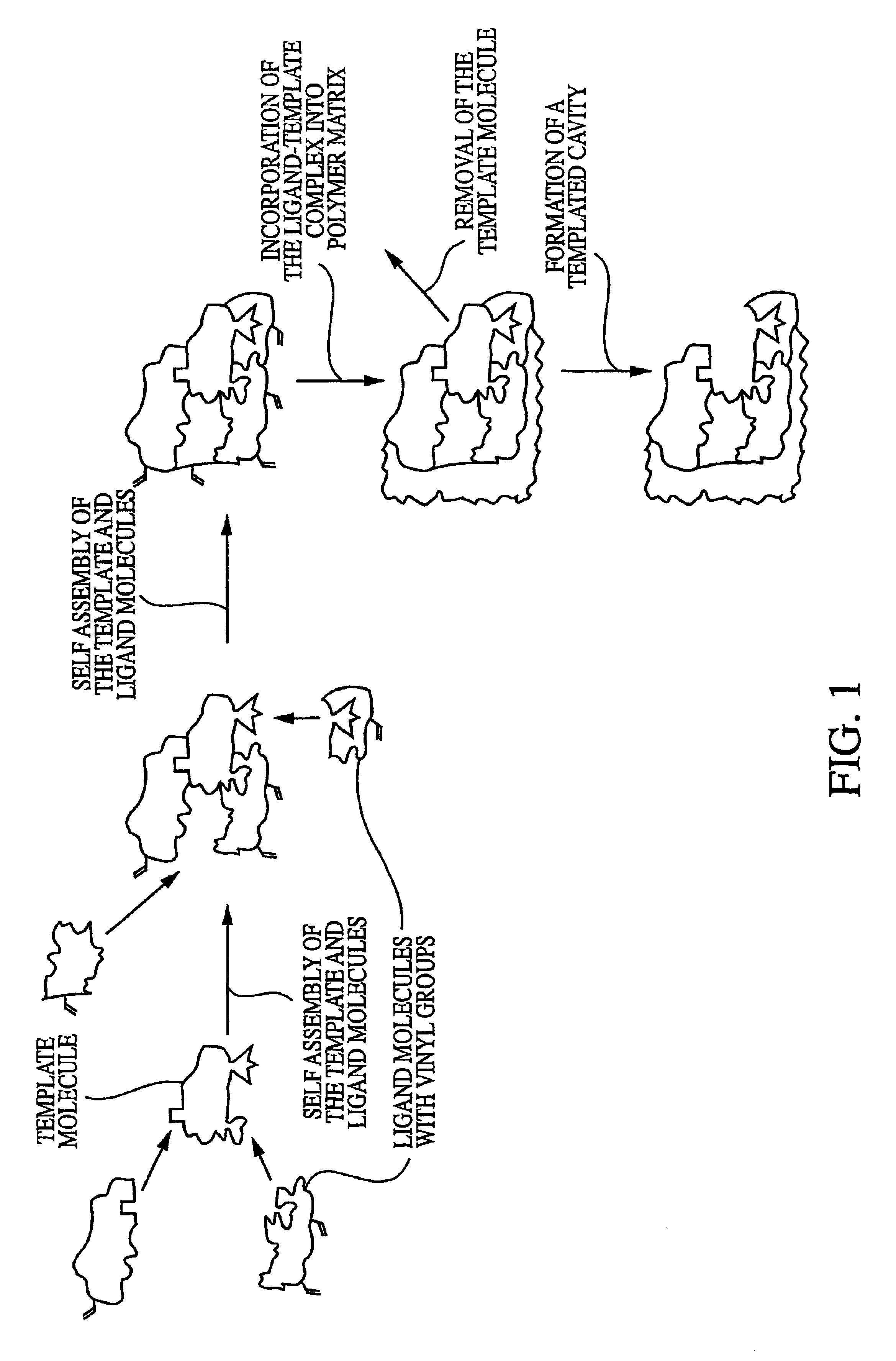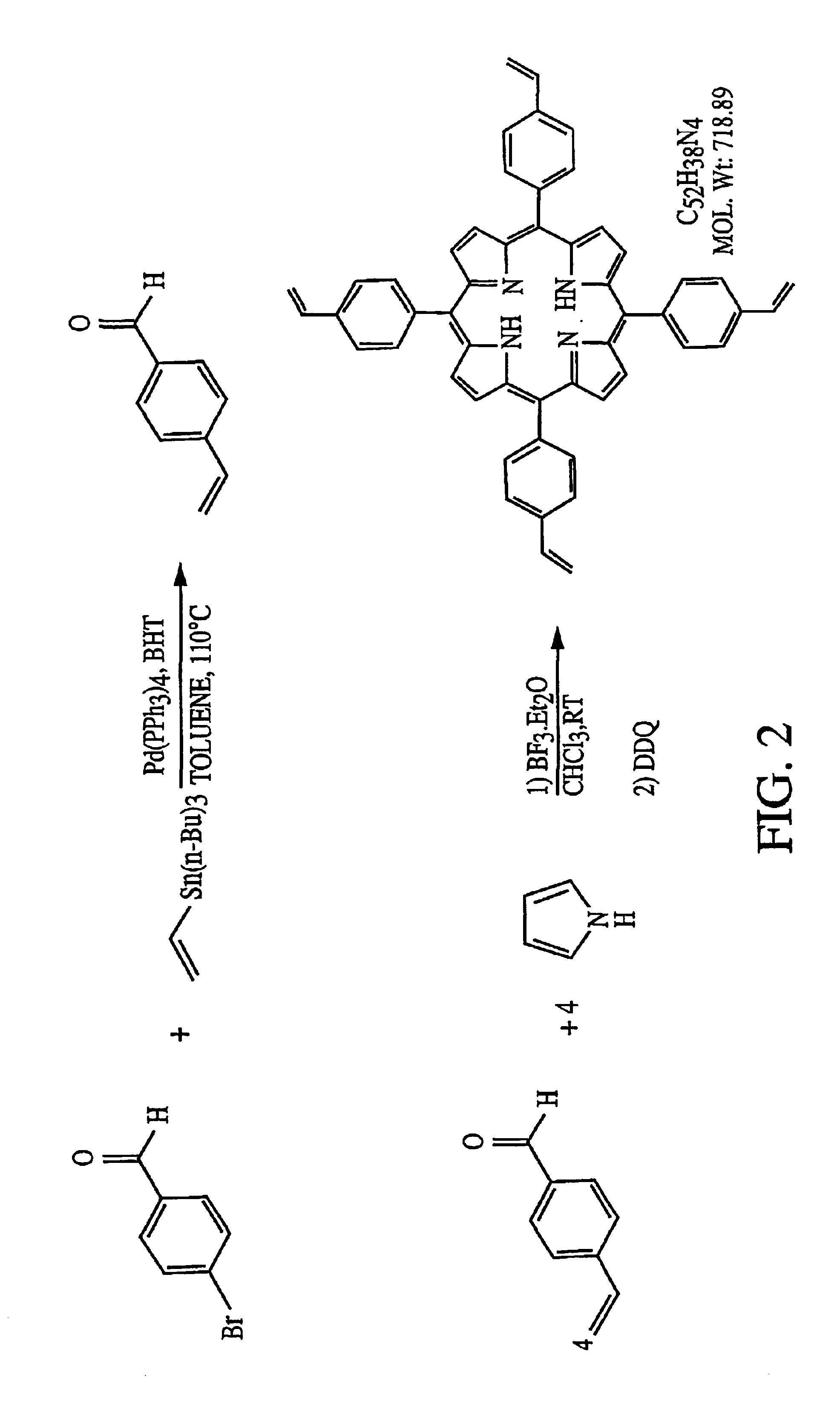Molecularly imprinted polymeric sensor for the detection of explosives
- Summary
- Abstract
- Description
- Claims
- Application Information
AI Technical Summary
Problems solved by technology
Method used
Image
Examples
example 1
Porphyrin Preparation
The synthesis of a tertrastyrylporphyrin is as depicted in FIG. 2. As shown therein, stoichiometric amounts of 4-vinylbenzaldehyde and pyrrole (0.01 M each in chloroform) are reacted with a catalytic amount of boron trifluoride etherate (0.0033 M) at room temperature for 60 minutes to form the intermediate porphyrinogen. This intermediate is then oxidized with 2,3-dichloro-5,6-dicyano-1,4-benzoquinone (DDQ) to form the derivatized porphyrin which is substituted by polymerizable styrene groups.
example 2
Polymer Preparation
Polymers were prepared by dissolving 0.10 to 1 weight percent porphyrin and a molar equivilent of trinitrobenzne, 83-88 mole percent styrene and 5-10 weight percent divinylbenzene as a crosslinker into a vial containing 2.0 mL of alcohol. Approximately 1 weight percent of azobisisobutylnitrile (AIBN) was added as an initiator. The resulting solutions were placed in glass vials, purged with nitrogen, and sealed using Parafilm and screw on tops. The resulting solutions were violet-brown in color indicative of the porphyrin. The solutions glowed red when excited with blue light.
The monomer solutions were sonicated for 2-4 hours at 60° C. (Sonication is believed to help maintain homogeneity in the polymer.) Zeng, X.; Murray, G. M. Separation Science and Technology, 31:2403-2418 (1996). After sonication, the partially polymerized material was placed in an oil bath at 60° C. and allowed to cure overnight. The resulting block copolymers were ground to expose a larger sur...
example 3
A procedure for preparing optical substrates for polymer coating was developed for the sensor coatings. A solution of trimethoxystyryl silane in toluene is used to place a chemically bound styrene coating on the surface of optical substrates. Experiments were first performed on microscope slides and have shown that the optimal period of silanization using trimethoxystyryl silane in toluene is about twenty minutes. The surface coverage of the layer is indicated by the contact angle made by a drop of water on the surface of the glass. Dip coating of surfaces prepared by silanization result in films that are chemically bound to the surface.
A fiber optic sensor comprising a 400 micron optical fiber (Thor Labs, Newton, N.J., 07860) with the polymeric sensing element chemically bound on its distal end was constructed. The fibers were prepared by terminating one end with an SMA connector and removing the cladding from and polishing the distal end using the procedures outl...
PUM
 Login to View More
Login to View More Abstract
Description
Claims
Application Information
 Login to View More
Login to View More - R&D
- Intellectual Property
- Life Sciences
- Materials
- Tech Scout
- Unparalleled Data Quality
- Higher Quality Content
- 60% Fewer Hallucinations
Browse by: Latest US Patents, China's latest patents, Technical Efficacy Thesaurus, Application Domain, Technology Topic, Popular Technical Reports.
© 2025 PatSnap. All rights reserved.Legal|Privacy policy|Modern Slavery Act Transparency Statement|Sitemap|About US| Contact US: help@patsnap.com



